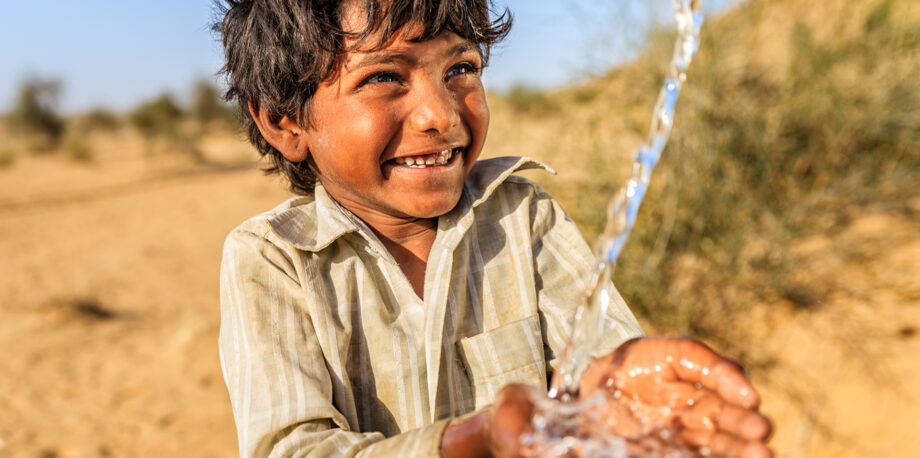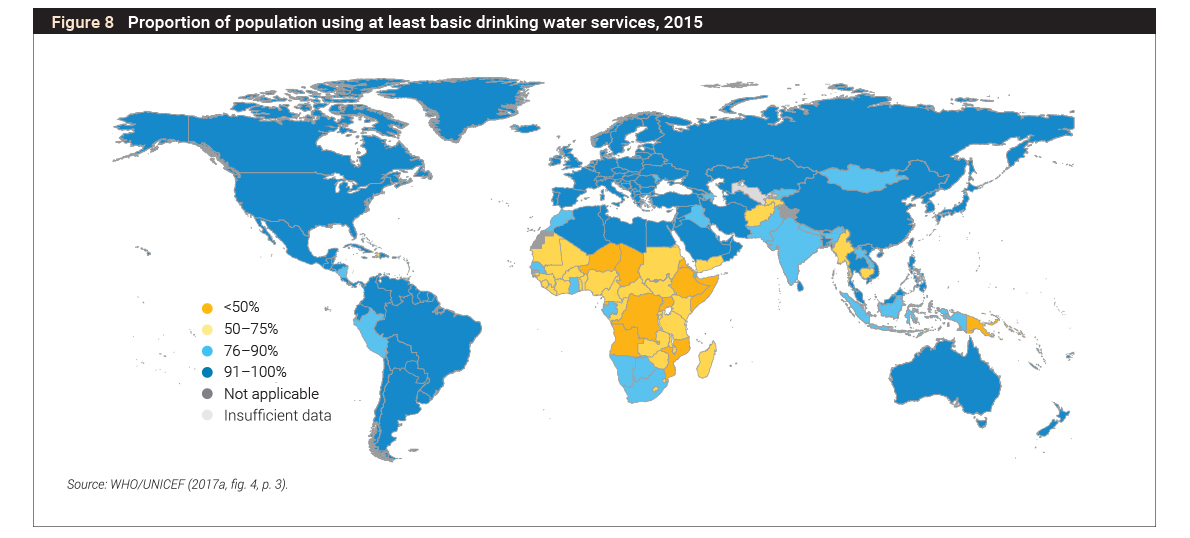May 1, 2019 — Three out of every 10 people on Earth lack access to a reliable supply of clean drinking water. Six out of 10 lack safe sanitation. And human demand for water is expected to grow 20% to 30% between now and 2050.
A problem this massive has many dimensions — and so do its solutions, according to the United Nations’ 2019 World Water Development Report, “Leaving No One Behind.”
“Water is the essence of life,” the report states. “Safe drinking water and sanitation are recognized as basic human rights, as they are indispensable to sustaining healthy livelihoods and fundamental in maintaining the dignity of all human beings.”
Yet around the world many are denied these basic rights. Technical and scientific solutions are crucial to meet all people’s water needs, the report says, as are social and economic strategies to broaden access by changing institutions and funding.
To tackle the world’s water problem, the report recommends several major responses for policymakers, water resource managers and others working in this area:
More (and More Targeted) Funding
Most of the 5.2 billion people who have access to safe drinking water get it through pipes. Many low-income people, however, lack piped water and instead rely on wells or water they purchase, typically at several times the cost of water in piped systems.
The report says governments need to “dramatically increase” the amount of money they spend to expand water, sanitation and hygiene services. But increased investment alone won’t be enough to ensure water access for marginalized people, so the report also stresses transparent, targeted subsidies to vulnerable groups. Involving community members in the planning process for water infrastructure is one proposed tactic to boost accountability.
Policymakers should also structure water rates for equity and affordability, the report says, while balancing these goals with the need to adequately fund water systems.
Research and Innovation to Inform Action
Research and innovation are key. Economic studies, for example, can help identify equitable water rates. Better data on how water and sanitation access varies along lines of gender, age, income, ethnicity, geography and the like can inform efforts to reduce disparities.
On the technical side, scientists and engineers should continue research to improve technology such as toilets and portable water filters.
Context-dependent Systems
In some places, water supply is limited by physical or environmental constraints. That calls for a focus on effective water resource management.
Where and how people live is another factor in designing solutions that work. In dense urban areas, for instance, centralized water infrastructure can be more cost-effective, while rural regions might see quicker gains with a focus on just bringing adequate facilities closer to people’s homes. When it comes to picking the right technologies and systems for water, sanitation and hygiene, the report says, it’s less about “best practice” and more about “best fit.”
Good Governance
The report describes direct discrimination, in which laws and practices intentionally shut particular groups out of services, and indirect discrimination, in which policies are supposedly neutral but still have the end result of denying people access to water and sanitation. Good governance entails rejecting both practices and moving toward values like transparency, justice and public participation.
Refugee camps are one example. To create access equality, the report says, governments must provide refugees and internally displaced people with the same level of water and sanitation service as other communities.
“Discrimination, exclusion, marginalization, entrenched power asymmetries and material inequalities are among the main obstacles to achieving the human rights to safe drinking water and sanitation for all and realizing the water-related goals of the 2030 Agenda,” the report notes, concluding that “these goals are entirely achievable, provided there is a collective will to do so.”
Ensia shares solutions-focused stories free of charge through our online magazine and partner media. That means audiences around the world have ready access to stories that can — and do — help them shape a better future. If you value our work, please show your support today.
Yes, I'll support Ensia!


